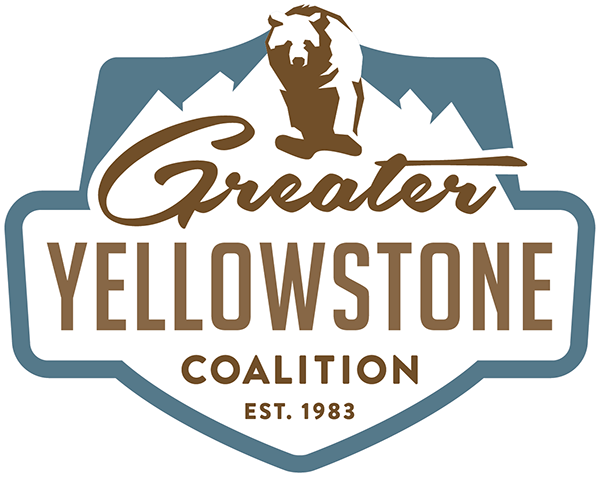Field Day: Picking Up Trash and Protecting Bears
GYC staff spent an afternoon cleaning a dumpsite near Yellowstone as part of an effort to prevent grizzly bear conflict.
GYC staff, and volunteers Evan Stout and Kyle Dudgeon show off their hard work. Photo GYC/Julia Barton
Admittedly, I rarely think much about where my garbage ends up once it’s in the bin—I bag it up, throw it in a dumpster, and wipe my hands clean. Kneeling in damp grass in Montana’s Paradise Valley earlier this month to pick up soggy cardboard and styrofoam with my double-gloved hands, however, I found myself reconsidering that whole journey, and what it means for our ecosystem.
Many small communities in Greater Yellowstone don't have the curbside trash pickup I’ve grown accustomed to. Instead, they bring their waste to shared dumpsites like the one I visited in Park County, near Chico Hot Springs just north of Yellowstone National Park. The wire lids of the dumpsters largely remain open, and garbage of all sorts ends up scattered in the grass, crushed into the soil, and pushed against fences.
As you can probably imagine, this creates a major attractant for wildlife—especially grizzly bears.
The inside of a grizzly’s stomach is hardly an ideal next step in this trash’s journey. Habituation to garbage and food is a leading cause of conflicts between bears and people and, subsequently, bear mortality.
This Park County, Montana dumpsite has three main dumpsters that are often left open. Photo GYC/Julia Barton
So, on a rainy Friday in May, a crew of GYC staff—including myself, Blakeley Adkins, Erin Steva, Naomi Schadt, Faye Nelson, Hali Camper, and Nora, Hali’s five-year-old daughter—took an afternoon field trip to the site to help clean things up in preparation for an exciting summer upgrade: the installation of hydraulic dumpster lids, electric fencing, and an electric entry mat.
Led by Blakeley, we filled roughly 20 trash bags with everything from latex gloves and food wrappers to half-disintegrated plastic and cardboard. Passing cars honked in thank you, a county commissioner stopped by to express his gratitude via a six-pack of beer, and somewhere along the way, we gained the helping hands of Bear Awareness Gardiner’s Evan Stout, and local filmmaker and naturalist Kyle Dudgeon.
If you’ve ever endeavored to clean up a large mess of garbage (literally or metaphorically), then you know the beginning stages can feel rather futile. For every handful of waste picked up, it felt like there was another right beside it, but slowly, our collective efforts became visible. We piled our full trash bags high before tossing them into the dumpster and surveying the fruits of our labor—a much cleaner area for Park County locals and businesses to dump their trash.
Soon, the new lids will help keep trash inside these dumpsters, and the electric upgrades will deter curious bruins from entering the dumpsite.
Photos GYC/Julia Barton
GYC has contributed $60,000 so far to bearproofing Greater Yellowstone dumpsites like this one. The upgrades here are a joint effort with partners, including Defenders of Wildlife; Montana Outdoor Legacy Foundation; Park County Environmental Council, Montana Fish, Wildlife and Parks; and People and Carnivores.
Stay tuned to learn about our work securing grizzly bear attractants at various Montana dumpsites this summer. Consider joining our email list to make sure you don’t miss out!
— Julia Barton, Communications Associate (Bozeman, MT)









